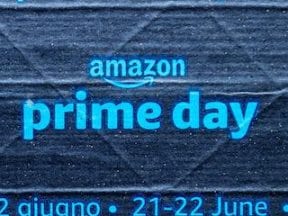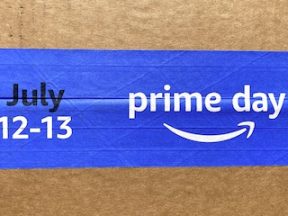Prompted by discounts, shoppers opened their wallets on July 11 and 12, spending more than they did in 2022 at this year’s Amazon Prime event. Fifty-four percent of U.S. shoppers said they purchased items they had postponed, per market research firm Numerator. Average household spending was $144.58, with most shoppers placing more than one order. According to Numerator, 23% of U.S. orders had an average order size of under $20, and only 5% were over $200.
The Numbers
Adobe Analytics calculates that U.S. shoppers spent $6.4 billion on July 11, a 5.9% increase over last year’s first day and the largest sales day in 2023. Amazon confirmed that July 11 was the largest sales day in history but did not provide figures.
On July 12, U.S. consumers spent $6.3 billion, up 6.4% year-over-year. The two-day total of $12.7 billion spent in the U.S. represents 6.1% growth year-over-year and sets a new record for Prime Day.
Amazon reported that members purchased more than 375 million items worldwide and saved more than $2.5 billion on deals.
—
Online sales were driven by appliances (up 37% from average daily sales in June 2023) and toys (up 27%). Other surging categories included apparel (up 26%) and electronics (up 12%).
Buy with Prime
U.S.-based Prime members could shop for items on participating merchants’ own websites using the new Buy with Prime program. Selected merchants were invited to participate in promotional activities to help drive awareness of the program. These deals were featured across Amazon channels, including placement in premium on-site banners on Amazon.com. Amazon reported that merchants who participated in Prime Day activities experienced in aggregate a 10-fold increase in daily Buy with Prime orders versus the prior month.
Discounts
The largest discounts offered by merchants over the two days were for electronics (14 to 16%), toys (12 to 15%), and apparel (12 to 13%). U.S. consumers waited for Prime Day to buy big-ticket items. Appliance purchases during the event increased 52% over an average day in June. Shoppers also stocked up on basic household supplies and got an early start on back-to-school supplies, according to Adobe.
While Walmart and Target also offered discounts, other competitors did not try to match Amazon this year as in the past. Walmart+ members could enjoy Walmart+ Week, which began on July 10 with deals on kitchen appliances and consumer electronics. Target offered Circle Week deals for its reward program members (July 9 through July 15). Target sweetened its deals by including a gift card when shoppers reached a purchase threshold.
According to shopper interviews conducted by Numerator, consumers who purchased from Amazon found the deals satisfactory, but 54% said they first compared Amazon’s prices with other retailers — 36% compared prices at Walmart and 25% at Target. Consumers were looking for the best deal.
Buy-now Pay-later Surged
Buy-now pay-later was a popular payment choice this year, according to Adobe Analytics, accounting for 6.4% of U.S. Amazon orders on July 11, or $461 million in sales. This represents 19.5% growth compared to the first day of Prime Day last year. The categories that had heavy BNPL usage were apparel, home goods, and electronics.
On July 12, BNPL accounted for 6.6% of U.S. orders, contributing $466 million in revenue and growing 21% compared to the second day last year. In total, BNPL drove $927 million in sales, an increase of 20% year-over-year. Many shoppers likely bought items they could not otherwise afford.
Mobile Shopping
Consumers felt comfortable shopping on small screens as U.S. sales on Amazon from smartphones accounted for 43.7% of revenue on July 11 and 44.8% on July 12, a small increase over last year for both days.




